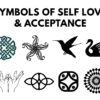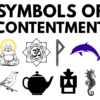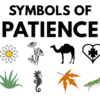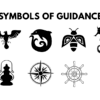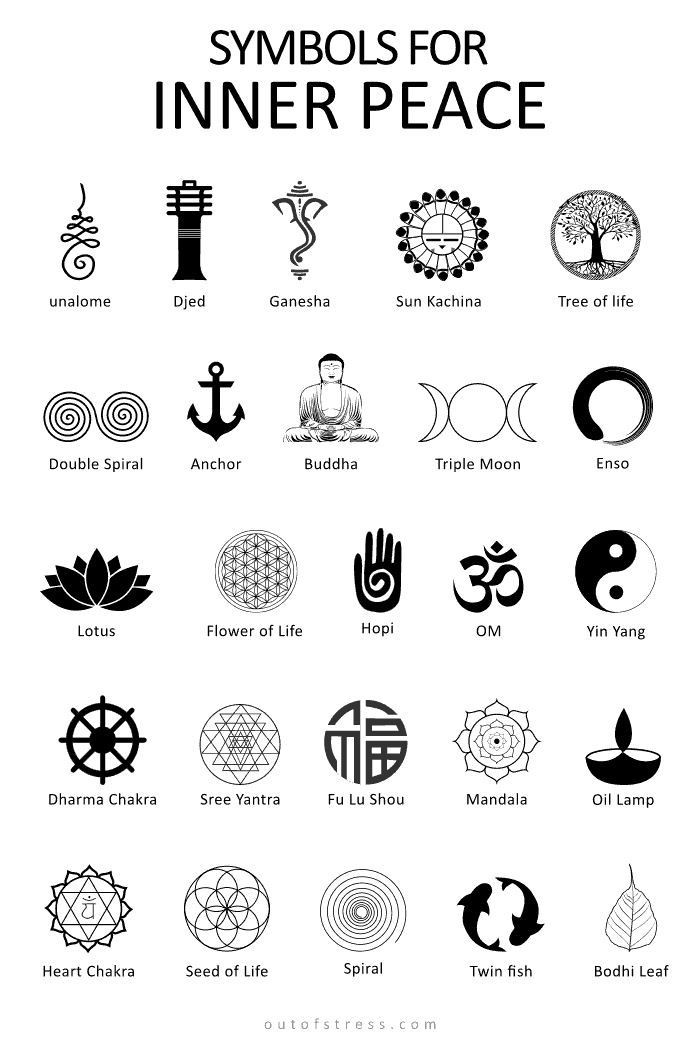
The OM symbol, Mandalas, Yin and Yang, the Tree of Life, these and many more symbols have permeated mainstream culture so fully that we don’t always think about their meaning when we see them on a piece of jewelry or home decor. If you’re on a spiritual path, though, these ancient, potent symbols can serve as your guide on the journey to self-growth.
The following is a selection of 17 of the most powerful spiritual symbols and their meanings, as well as how you can use these symbols to attain inner peace.
17 Symbols for inner peace
1. OM symbol
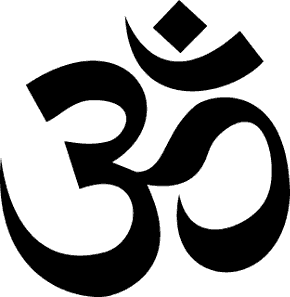
OM consists of five parts, which symbolize our waking, dreaming, unconscious, and transcendent states, as well as the veil that separates the transcendent state from the waking state. This traditional yogic symbol is said to bring us closer to God (or Universal love) and inner peace when observed or chanted.
2. Reiki Shanti symbol
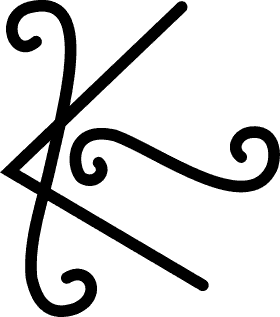
The Shanti symbol comes from the Karuna Reiki system and represents spiritual guidance, intuition, manifestation, release, healing, harmony, positive energy and inner peace. In the Reiki system, one can draw this symbol and meditate on it to attract inner peace and guidance.
3. Tree of life
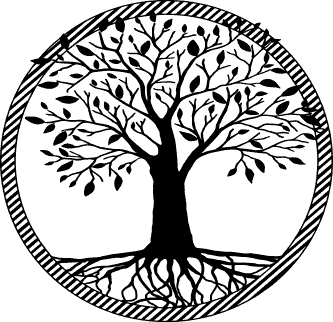
This universal tree symbol, found across cultures as far back as 7000 BC, symbolizes the entire human condition, with its meanings threaded through the themes of groundedness, interconnectedness, and family, to name a few. Perhaps most importantly, the Tree of Life teaches us that we are one with the Universe and thus never separate from love.
4. Yin Yang
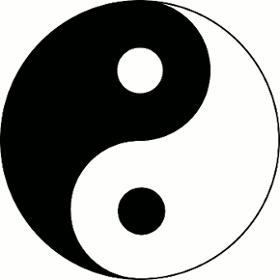
The popular Yin Yang, traditional to Chinese culture, contains equal parts black and white. Therefore, this symbol shows us that we cannot have the light without the dark; trying to only embrace the light, and constantly push away the dark, will leave us fragmented within ourselves. We must embrace both. The Yin Yang is also a symbol of balance, contentment and inner peace.
5. Enso or Zen circle
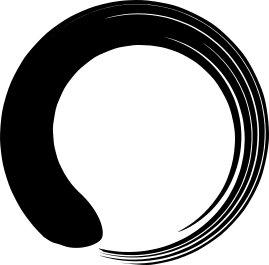
Originating from Buddhism paired with Japanese calligraphy, the Enso looks like an unclosed circle, and symbolizes the circle of life. Primarily, Enso teaches us to be at peace with everything that comes with life, and the miraculous rebirth and renewal that can bless us after every setback.
6. Ganesha symbol
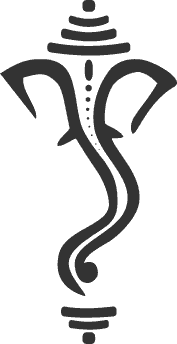
Lord Ganesha, traditional to Hinduism, looks like a golden, adorned elephant sitting cross-legged. In India, elephants are known to walk through forests and clear paths for other creatures to move through. Likewise, Ganesha (as an elephant) is said to clear life’s obstacles for us when we begin something new. Ganesha also stands for contentment, abundance and inner peace.
7. Meditating Buddha
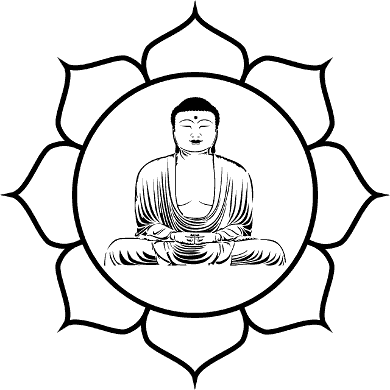
We’ve all seen little Buddha statues sitting happily in gardens or outside of temples; there are actually several versions of these Buddhas, in which the Buddha holds different postures. Each has a different meaning, but the meditating Buddha (in which he sits in the lotus pose with his hands on his lap, face up) signifies the tranquility and inner peace one may reach in a meditative state.
8. Hopi hand
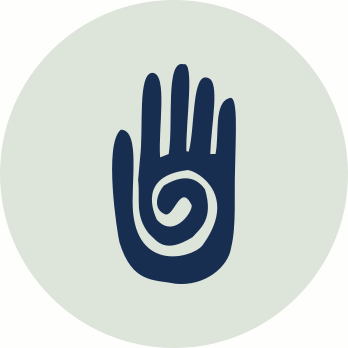
Yet another powerful Hopi hieroglyph, the Hopi hand contains a spiral in its center, which somewhat resembles the Japanese Enso. These two symbols carry slightly similar meanings, as well. Commonly known as the Shaman’s Hand, the Hopi hand is said to possess the Shaman’s healing powers. It also represents luck, health, centeredness, peace and fortune.
9. Lotus
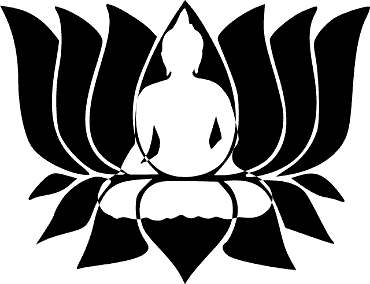
The lotus symbol represents a real plant that grows deep in the mud, away from the sun; in fact, one might not realize that a lotus plant is growing until the plant’s blossoms shoot up above the mud. Similarly, the lotus symbol teaches us to stay connected to our inner peace and not let the outer circumstances impact us. The lotus is a symbol of peace, strength, groundedness, detachment and presence.
10. Unalome
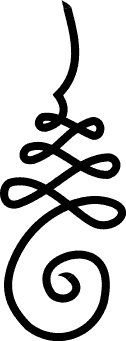
The Unalome is another symbol which originated in Buddhism. As a whole, it represents enlightenment; it consists of a spiral, which signifies your birth followed by your cyclical patterns of physical and spiritual growth. The lines atop the spiral symbolize the layers of one’s spiritual awakening leading to inner peace.
11. Djed

This Egyptian symbol looks like a pillar, but it actually represents Osiris’s backbone. Osiris is the Egyptian god of the Underworld. As such, the Djed symbol reminds us that death is not the end; death is actually a rebirth into a whole new life on the Other Side. This symbol stands for strength, stability and inner connection.
12. Mandalas

You’ve likely noticed multicolored, ornate mandalas on yoga mats or hanging on the walls in spiritual shops. These circular symbols are more than just decoration; their intricate structures symbolize the deep interconnectedness of humans and all living beings with both the Earth and the Universe.
13. Triple moon or triple goddess symbol
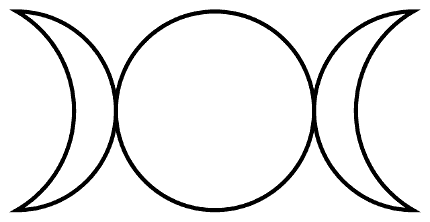
“Triple moon”, a Wiccan symbol, signifies the three versions of the moon: waxing, full, and waning. These three phases, put together, represent the “triple goddess”, otherwise known as the maiden, mother, and crone– they symbolize femininity, and the three phases of a woman’s life. This symbol also stands for balance, eternity and enlightenment.
14. Double spiral
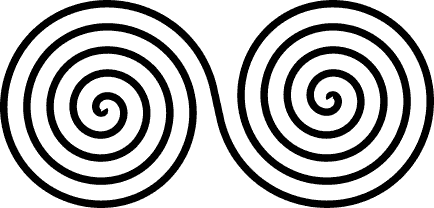
A Celtic symbol, the double spiral came to represent duality in many different forms: birth and death, creation and destruction, or physical and spiritual, just to name a few examples. In this regard, the double spiral bears resemblance to yin yang, in that it teaches us about the balance between life’s polarities. This symbol stands for balance, centeredness and spiritual awakening.
15. Anchor

The anchor may be one of the most widely recognized symbols on this list. Everybody knows that an anchor keeps a ship stationary at a port; thus, when sailors lift the anchor, the ship is able to set sail. Anchors, therefore, represent groundedness and strength, as well as being steadfast in one’s personal truth.
16. Bodhi leaf
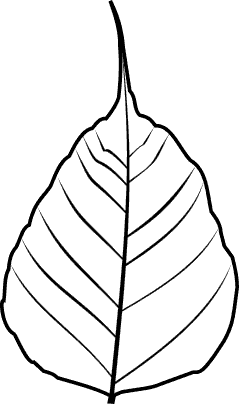
It was while meditating under the Bodhi tree that Gautama became enlightenment and attained Buddhahood. Therefore
the Bodhi Leaf has always been equated with knowledge, wisdom and deep inner connection.
17. Tawa or Sun Kachina
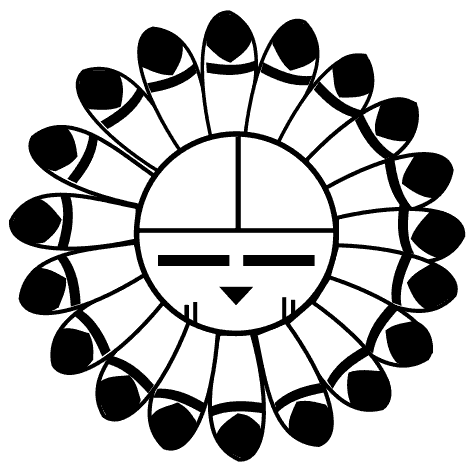
The Hopi tribe used their traditional Tawa, which looks like a sun, during their solstice ceremony. They used this symbol to pray for the sun to return, so that they could begin growing crops. As such, this symbol carries vibrations of abundance, prosperity, peace and fortune.
How can you use these symbols for inner peace?
Ask yourself: which of these symbols’ meanings create an emotional, heart-centered connection in you? Perhaps you’d like help with staying grounded in your personal truth, or maybe you need to embrace tranquility, inner peace or acceptance. The symbols that make you feel something are the symbols that you need in your life!
Make a list of the symbols you feel connected with. Then, plan to place or wear these symbols somewhere you will see them daily. You could wear a necklace with a lotus symbol on it to remind you of staying in touch with your inner peace at all times, or perhaps hang a Tree of Life tapestry in your home to remind you of your infinite connection with Universal love.
Again, this works well if you know the meaning of the symbol, and if you feel deeply connected to its meaning. Every time you see your chosen symbol, it will remind you of its deeper meaning.
All in all, whether you hope to become more tranquil, or attract luck and good health, spiritual symbols can help– and they look gorgeous when adorning your body or home, too! Remember that the best symbol is the symbol that really means something to you, and you can’t go wrong.


